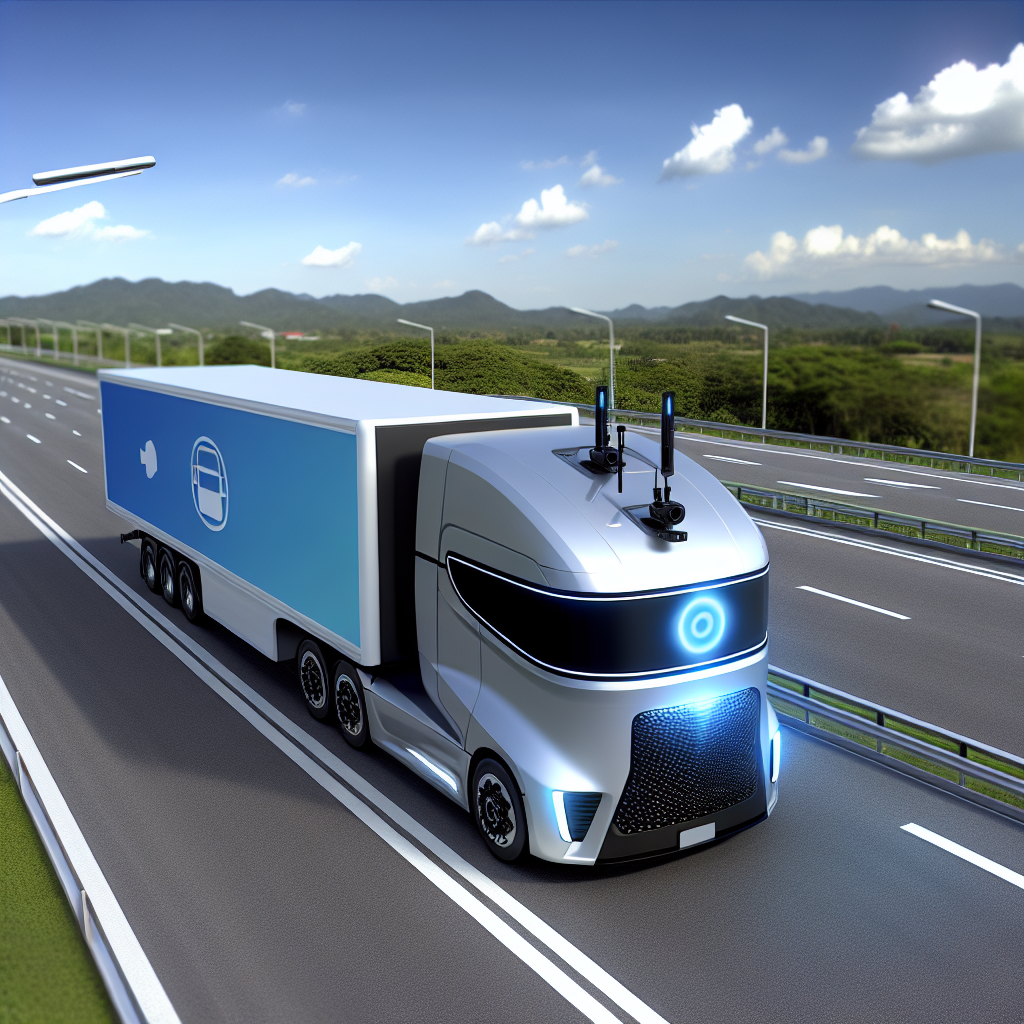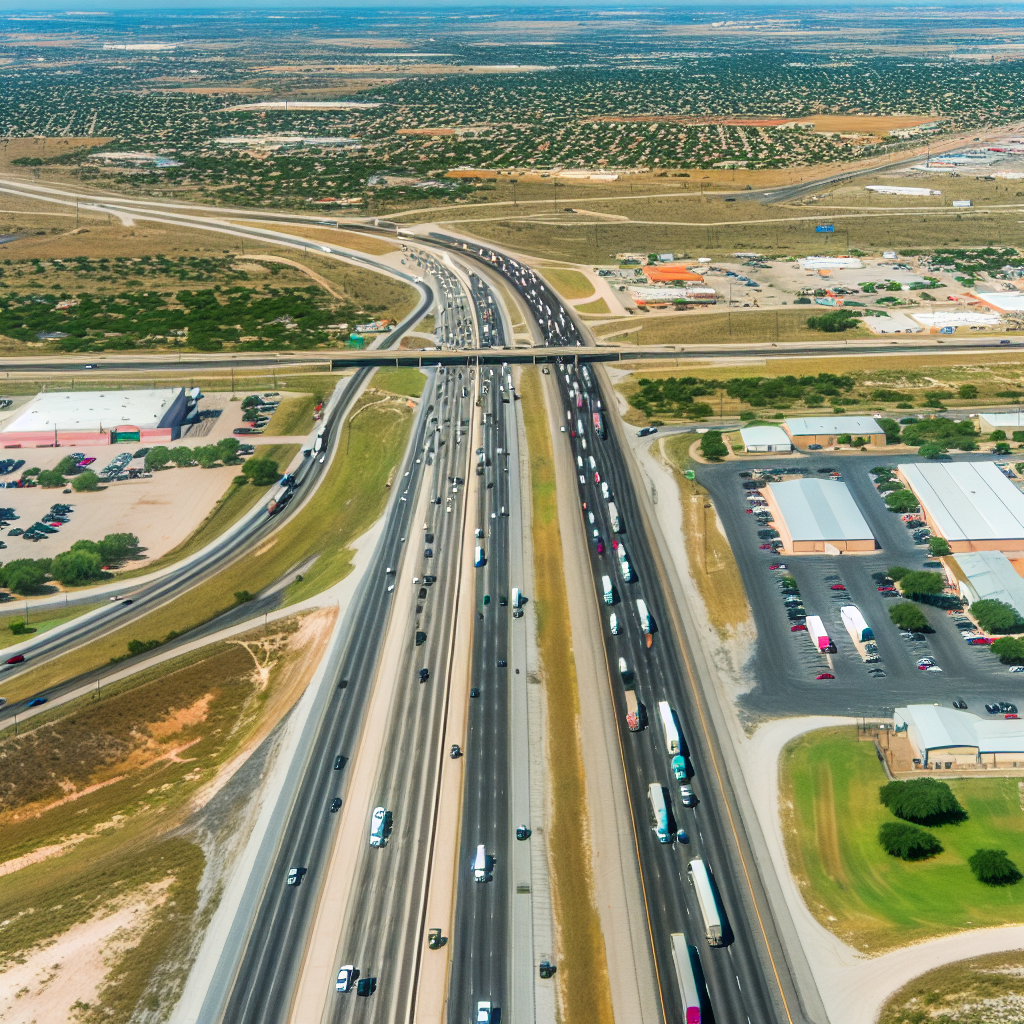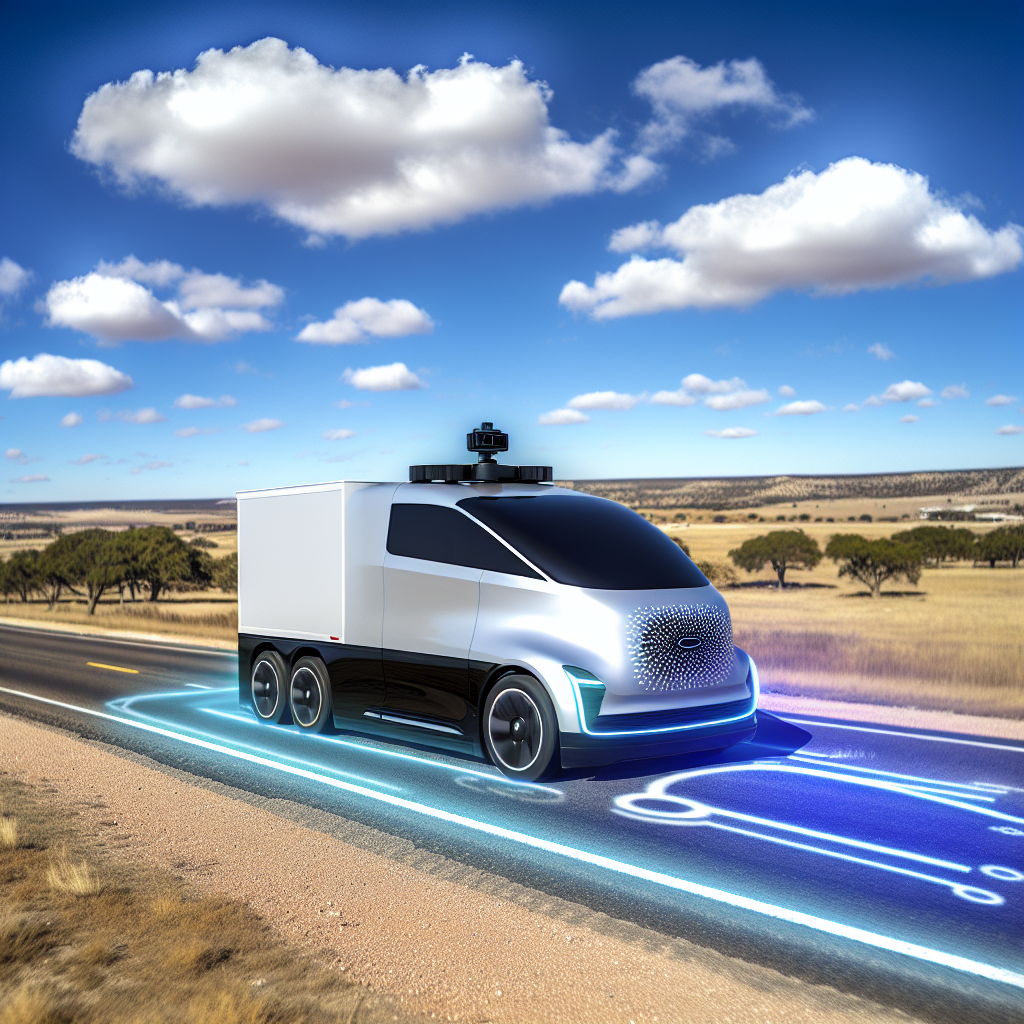In an era where technological advancements are reshaping industries, the trucking sector stands out with significant innovations, particularly in the realm of autonomy. The recent partnership between International and PlusAI marks a pivotal moment in this evolution, delivering an exciting glimpse into the future of freight transport. Set against the backdrop of the bustling Interstate-35 corridor in Texas, their pilot program is not just a trial; it represents a critical leap toward revolutionizing how goods travel across long distances.
Emphasizing the transformative safety potential of these technologies, David Liu, CEO of Plus, states, “Machines don’t get tired; they obey the rules of the road, and they have no egos. This makes it much safer than a human being at the wheel.” This initiative introduces the Autonomous LT Series tractor, equipped with state-of-the-art sensors and AI-driven software, designed to enhance safety and streamline operations.
The journey of this autonomous vehicle, specifically between Laredo and Dallas, is sure to capture the attention of industry stakeholders and enthusiasts alike, as it showcases the potential for transforming logistics with cutting-edge technology. Join us as we explore how this collaboration will redefine the landscape of trucking and the promise it holds for the future of transportation.

The Significance of the Pilot Program
The pilot program initiated by International and PlusAI holds immense significance for the future of autonomous trucking and digital operations. It represents a critical step in advancing logistics technology, particularly through fleet trials designed to assess how well autonomous vehicles can integrate into existing transportation networks. Given the complexities of modern logistics, this initiative provides a vital testing ground for AI-based driving software that could reshape freight transport.
One of the primary aims of the pilot is to enhance safety. The integration of advanced technologies such as imaging radar, lidar, and a multimodal sensor kit allows for a 360-degree vision of the surroundings. These features are expected to significantly reduce the likelihood of accidents, contributing to a safer road environment for both autonomous vehicles and traditional trucks. Tobias Glitterstam, the chief strategy and transformation officer, emphasized this aspect, stating, “This pilot program is a big step toward seamless digital operations that are designed to deliver an exceptional customer experience.“
Moreover, the trials are expected to improve reliability, a crucial factor for customers relying on timely deliveries. By testing the Autonomous LT Series tractor on a well-defined route along the Interstate-35 corridor, the partnership aims to gather critical data on performance under real-world conditions. This information will be invaluable as they refine the technology and approach toward incorporating autonomous trucks into broader operations.
Customer experience is equally at the forefront of this pilot program. As fleet trials progress, insights gained will allow International and PlusAI to tailor their offerings better to meet client expectations. This effort prioritizes not only the efficiency of operations but also how customers perceive the integration of these autonomous solutions. Through constant feedback mechanisms, the partners aim to adapt their technologies, ensuring that the end user sees tangible benefits in both service quality and operational excellence.
In conclusion, the collaborative pilot between International and PlusAI is poised to be a game-changer in the autonomous trucking landscape. By focusing on safety, reliability, and customer experience, it sets the stage for a future where autonomous vehicles are not just innovations but integral components of transportation infrastructure.
Technological Advancements of the LT Series Tractor
The second-generation Autonomous LT Series tractor is a significant leap forward in the realm of autonomous trucking, showcasing an impressive array of technological enhancements that position it within the leading edge of transportation technology. Key features of this advanced vehicle include:
- Updated Sensor Suite: Equipped with a multimodal sensor kit, the LT Series tractor incorporates imaging radar, lidar, and multiple cameras, providing comprehensive environmental perception that is essential for safe navigation. This sensor fusion allows the tractor to gather a rich dataset from its surroundings, enhancing its decision-making capabilities in real-time.
- Advanced Computer System: A factory-installed computer system plays a crucial role in processing data from the sensor suite. This enhanced computing power enables sophisticated algorithms to analyze the information efficiently, allowing for immediate responses to dynamic roadway conditions.
- SuperDrive Autonomous Driving Software: Developed by PlusAI, this cutting-edge software is based on AI models trained using real-world driving data. This capability accommodates adaptability to varying routes and traffic scenarios, ensuring the autonomous vehicle can operate effectively in diverse environments. With its AI-powered perception, the LT Series tractor can recognize objects and navigate complex situations that drivers may encounter on the roads.
These technological advancements align seamlessly with the trends observed in the broader autonomous trucking industry, such as autonomous trucking technology and logistics automation.
Moreover, industry players like Aeva and Luminar are pushing the envelope with advanced lidar technologies, integrating high-resolution and long-range sensors that significantly enhance vehicle perception capabilities. This indicates a broader movement within the autonomous vehicle sector towards improved safety, reliability, and efficiency.
In conclusion, the technological advancements within the second-generation Autonomous LT Series tractor not only position it as a significant player in the world of autonomous trucks but also reflect the ongoing trends and innovations shaping the future of transportation. By integrating advanced sensor technologies, reliable computer systems, and AI-driven software, International and PlusAI are paving the way for a more autonomous, efficient, and safer logistics ecosystem.
Comparison of Traditional Trucks and Autonomous Trucks
| Feature | Traditional Trucks | Autonomous Trucks |
|---|---|---|
| Safety | Dependent on human drivers, prone to human error | Equipped with advanced sensors, reducing accident risks |
| Efficiency | May encounter delays due to traffic and human factors | Optimized routes improve fuel efficiency and reduce downtime |
| Customer Experience | Limited data on driving patterns, less transparent | Real-time tracking and performance analytics enhance user experience |
| Operational Costs | Higher due to fuel, maintenance, and human resources | Lower in the long run with reduced need for drivers and optimized fuel usage |
| Adaptability | Limited ability to respond to changing traffic patterns | AI algorithms allow for immediate adjustments to routes and conditions |
| Technology Integration | Basic digital tools and telematics | Advanced systems integrating AI, radar, and lidar for better decision making |
As we delve deeper into the partnership between International and PlusAI, it is evident that these advancements in autonomous trucks are poised to usher in a new era of efficiency and safety in logistics. The LT Series tractor is tailored to not just compete, but to redefine what transportation means in the contemporary landscape, ensuring enhanced experiences for both operators and customers alike.
Interstate-35 Pilot Route
The pilot program for autonomous trucking initiated by International and PlusAI follows a key stretch along the Interstate-35 (I-35) corridor, specifically spanning from Laredo to Dallas, which covers a distance of approximately 430 miles (692 kilometers). This route serves as a significant testing ground, not only for the technology itself but also in understanding how it integrates into the wider logistics framework of the state. The estimated travel time for this distance is about 6 hours and 23 minutes, making it accessible for real-world operational trials that can yield insightful performance data.
The rationale behind selecting the Interstate-35 corridor is multi-faceted. Firstly, this route is one of Texas’s busiest highways, linking major trade centers such as San Antonio and Austin, thus reflecting high freight traffic which presents ample opportunities for autonomous truck operations. The area is economically vibrant, with robust trade activity driving the logistics sector.
Geographically, Texas offers an advantage with its extensive highway network and generally favorable weather conditions, making it conducive for year-round operations. These factors facilitate continuous testing and data collection, essential for refining autonomous driving technology. Moreover, the strategic positioning of this route allows for close monitoring of various situations drivers may face, including urban driving, highway cruising, and navigating around freight-heavy areas.
By focusing on this specific corridor, the pilot program aims not only to evaluate the performance of the Autonomous LT Series tractor but also to gauge its interactions with other road users, assess its safety features, and ultimately streamline the autonomous trucking process in real-world settings. This initiative is pivotal not just for the participants but for the logistics industry at large, aiming to pave the way for more sophisticated and integrated transport solutions in the future.

Conclusion
The partnership between International and PlusAI marks a monumental leap forward in the trucking industry, with the pilot program of the Autonomous LT Series tractor set to deliver transformative outcomes. As the trials commence along the bustling Interstate-35 corridor, we anticipate significant advancements in safety, efficiency, and adaptability—all critical elements in redefining freight logistics. By harnessing cutting-edge technologies and AI-driven systems, these autonomous vehicles are poised to enhance road safety, minimize operational costs, and streamline delivery processes.
Moreover, the wealth of data collected during this pilot program will not only inform future developments of the LT Series tractor but also lay the groundwork for further innovations within the autonomous trucking sector. Industry stakeholders can look forward to a more interconnected and efficient logistics framework as these trial successes pave the way for broader adoption of autonomous technology.
Looking ahead, this pilot is just the beginning. The potential for future partnerships in autonomous technology is boundless, as we see an increasing collaborative approach among different players in the industry. Together, we can expect an expansive evolution in transportation that continually prioritizes customer experience while embracing sustainability. With its foundational focus on innovation, safety, and operational excellence, the International and PlusAI partnership exemplifies the future of trucking—one that is driven by technology and poised to lead the logistics sector into a new era of efficiency and reliability.
Call to Action
We invite you to be part of this exciting journey into the future of trucking. Share your thoughts and feedback about the developing landscape of autonomous trucks in our comment section below. Whether you have questions, insights, or experiences to share, your input is invaluable as we navigate this transformative chapter in transportation. Stay engaged and connected with us as these technologies unfold!
User Adoption of Autonomous Trucks
As of 2023, the user adoption of autonomous trucks is gaining momentum, driven by significant technological advancements and investment in the sector. However, several barriers to adoption remain.
Positive Trends
- Global Deployment: Approximately 1,000 autonomous trucks are currently operating worldwide, with about 400 units in the United States. Major players in this field include Inceptio Technology, Einride, and Pony.ai.
- Market Growth: The global autonomous truck market was valued at $19 billion in 2022 and is projected to grow at a compound annual growth rate (CAGR) of 7.16% through 2028. This suggests a strong market optimism surrounding autonomous trucking.
- Technological Integration: Companies are increasingly integrating autonomous platforms with existing transportation management systems. For example, Aurora Innovation has partnered with McLeod Software to streamline autonomous truck shipments, enhancing operational efficiency.
- Investment Momentum: Autonomous trucking startups are attracting significant funding, such as Waabi, which raised $200 million in a Series B funding round to advance their fully autonomous trucks aimed for deployment in 2025.
- Milestones in Safety: Inceptio Technology’s trucks have achieved over 50 million kilometers of accident-free driving on China’s highways, demonstrating the potential for safety improvements as the technology matures.
- Regulatory Progress: Some areas are establishing regulatory frameworks that support autonomous trucking operations, with California making strides in drafting regulations that enable self-driving trucks on highways.
Barriers to Adoption
- Regulatory Complexity: The autonomous trucking sector faces a fragmented regulatory environment, as individual states have different regulations, complicating operations across state lines. California’s recent draft regulations, for instance, still require safety drivers, reflecting ongoing safety and labor concerns.
- Public Skepticism: Public trust in autonomous vehicles is a significant barrier. A 2023 survey by the American Automobile Association (AAA) found that 68% of U.S. drivers have strong fears regarding self-driving vehicles, citing safety as a major concern.
- High Development Costs: The deployment of autonomous trucks requires substantial investments in technology such as AI, LiDAR, and advanced computing, leading to challenges in achieving a favorable return on investment.
The Future of Autonomous Trucks
The autonomous trucking sector is poised for significant advancements in 2025, with projections indicating substantial growth and transformative impacts on the logistics and transportation industries.
Market Growth Projections
- The global autonomous truck market is expected to be valued at $13.11 billion in 2025, with forecasts projecting growth to $41.21 billion by 2035, representing a compound annual growth rate (CAGR) of 12.1%. Source
- Another analysis anticipates the autonomous truck market to reach $86.78 billion by 2032, growing at a CAGR of 10.6%. Source
Technological Developments and Partnerships
- Aurora Innovation has partnered with McLeod Software to integrate its self-driving trucking platform into McLeod’s transportation management system. This collaboration aims to streamline the management of autonomous shipments, facilitating broader adoption of autonomous freight technology. Source
- Waabi, an autonomous vehicle technology company, has joined forces with Volvo to incorporate its self-driving technology into Volvo’s advanced trucks. This partnership signifies progress toward deploying autonomous trucks on U.S. highways. Source
Regulatory Landscape
- California’s Department of Motor Vehicles has proposed new regulations to permit the testing of self-driving heavy-duty trucks on public roads. This initiative reflects a broader trend of states reevaluating policies to accommodate autonomous vehicle testing and deployment. Source
Operational Challenges and Considerations
- Aurora Innovation plans to enable its autonomous trucks to operate in inclement weather conditions following the commercial launch of its driverless trucking service in Texas in 2025. This expansion aims to enhance the operational design domain of autonomous vehicles, addressing challenges posed by adverse weather. Source
- Despite technological advancements, the industry faces challenges such as high initial costs, legal and regulatory uncertainties, and cybersecurity risks. Addressing these issues is crucial for the widespread adoption of autonomous trucks. Source
In summary, 2025 is set to be a pivotal year for autonomous trucks, marked by significant market growth, strategic partnerships, evolving regulations, and ongoing efforts to overcome operational challenges.
| Feature | LT Series Tractor | Traditional Trucks |
|---|---|---|
| Sensor Suite | Multimodal sensor kit with imaging radar, lidar, and cameras, allowing for comprehensive awareness of surroundings. | Basic sensors often limited to rearview mirrors and occasional cameras. |
| Driving Technology | Powered by AI-based SuperDrive software enabling dynamic route adaptation. | Primarily human-driven, relying on driver experience and judgement. |
| Efficiency | Optimized routes calculated by software to reduce fuel consumption and downtime. | Route inefficiencies due to human judgment and planning delays. |
| Safety Features | 360-degree vision with advanced radar and lidar systems significantly enhances safety. | Relies on human reaction times, which may lead to accidents. |
| Data Collection | Continuous data collection for real-time analytics and system improvements. | Minimal data usage, often limited to personal logs and reports. |
| Operational Flexibility | Designed for adaptability across various traffic conditions through real-time algorithm adjustments. | Less adaptable, with significant challenges adjusting to sudden changes in traffic. |
Introduction
In an era where technological advancements are reshaping industries, the trucking sector stands out with significant innovations, particularly in the realm of autonomy. The recent partnership between International and PlusAI marks a pivotal moment in this evolution, delivering an exciting glimpse into the future of freight transport.
Set against the backdrop of the bustling Interstate-35 corridor in Texas, their pilot program is not just a trial; it represents a critical leap toward revolutionizing how goods travel across long distances. Emphasizing the transformative safety potential of these technologies, David Liu, CEO of Plus, states, “Machines don’t get tired; they obey the rules of the road, and they have no egos. This makes it much safer than a human being at the wheel.”
This initiative introduces the Autonomous LT Series tractor, equipped with state-of-the-art sensors and AI-driven software, designed to enhance safety and streamline operations. The journey of this autonomous vehicle, specifically between Laredo and Dallas, is sure to capture the attention of industry stakeholders and enthusiasts alike, as it showcases the potential for transforming logistics with cutting-edge technology.
Join us as we explore how this collaboration will redefine the landscape of trucking and the promise it holds for the future of transportation.
The Significance of the Pilot Program
The pilot program initiated by International and PlusAI holds immense significance for the future of autonomous trucking and digital operations. It represents a critical step in advancing logistics technology, particularly through fleet trials designed to assess how well autonomous vehicles can integrate into existing transportation networks. Given the complexities of modern logistics, this initiative provides a vital testing ground for AI-based driving software that could reshape freight transport.
Key Objectives
- Enhance Safety: The integration of advanced technologies such as imaging radar, lidar, and a multimodal sensor kit allows for a 360-degree vision of the surroundings, significantly reducing the likelihood of accidents.
- Improve Reliability: By testing the Autonomous LT Series tractor on a well-defined route along the Interstate-35 corridor, the partnership aims to gather critical data on performance under real-world conditions.
- Prioritize Customer Experience: Insights gained from the fleet trials will help better tailor offerings to meet client expectations, focusing on efficiency and service quality.
In conclusion, the collaborative pilot between International and PlusAI is poised to be a game-changer in the autonomous trucking landscape. By focusing on safety, reliability, and customer experience, it sets the stage for a future where autonomous vehicles are integral components of transportation infrastructure.
Technological Advancements of the LT Series Tractor
The second-generation Autonomous LT Series tractor is a significant leap forward in the realm of autonomous trucking, showcasing an impressive array of technological enhancements that position it within the leading edge of transportation technology. Key features of this advanced vehicle include:
- Updated Sensor Suite: This includes imaging radar, lidar, and multiple cameras, providing comprehensive environmental perception essential for safe navigation.
- Advanced Computer System: This system processes data from the sensor suite efficiently, allowing for immediate responses to dynamic roadway conditions.
- SuperDrive Autonomous Driving Software: Based on AI models, it accommodates adaptability to varying routes and traffic scenarios.
These advancements reflect a broader movement in the autonomous vehicle sector towards improved safety, reliability, and efficiency.
Comparison of Traditional Trucks and Autonomous Trucks
| Feature | Traditional Trucks | Autonomous Trucks |
|---|---|---|
| Safety | Dependent on human drivers, prone to human error | Equipped with advanced sensors, reducing accident risks |
| Efficiency | May encounter delays due to traffic and human factors | Optimized routes improve fuel efficiency and reduce downtime |
| Customer Experience | Limited data on driving patterns, less transparent | Real-time tracking and performance analytics enhance user experience |
| Operational Costs | Higher due to fuel, maintenance, and human resources | Lower in the long run with reduced need for drivers and optimized fuel usage |
| Adaptability | Limited ability to respond to changing traffic patterns | AI algorithms allow for immediate adjustments to routes and conditions |
| Technology Integration | Basic digital tools and telematics | Advanced systems integrating AI, radar, and lidar for better decision making |
As we delve deeper into the partnership between International and PlusAI, it is evident that these advancements in autonomous trucks are poised to usher in a new era of efficiency and safety in logistics.
Interstate-35 Pilot Route
The pilot program for autonomous trucking initiated by International and PlusAI follows a key stretch along the Interstate-35 (I-35) corridor, specifically spanning from Laredo to Dallas, which covers a distance of approximately 430 miles (692 kilometers). This route serves as a significant testing ground, understanding how it integrates into the wider logistics framework of the state.
Rationale for Route Selection
- High Traffic: One of Texas’s busiest highways, reflecting ample opportunities for autonomous truck operations.
- Favorable Conditions: Texas’ extensive highway network and generally favorable weather conditions support continuous testing.
- Diverse Situations: Close monitoring of various driving situations, including urban driving and highway cruising.
By focusing on this specific corridor, the pilot program aims not only to evaluate the performance of the Autonomous LT Series tractor but also to gauge its interactions with other road users, assess its safety features, and ultimately streamline the autonomous trucking process in real-world settings.
Conclusion
The partnership between International and PlusAI marks a monumental leap forward in the trucking industry, with the pilot program of the Autonomous LT Series tractor set to deliver transformative outcomes. As the trials commence along the bustling Interstate-35 corridor, we anticipate significant advancements in safety, efficiency, and adaptability—all critical elements in redefining freight logistics.
Moreover, the wealth of data collected during this pilot program will not only inform future developments but further innovations in the autonomous trucking sector. Looking ahead, potential partnerships and ongoing technological advancements signify a future driven by innovation, safety, and operational excellence.


